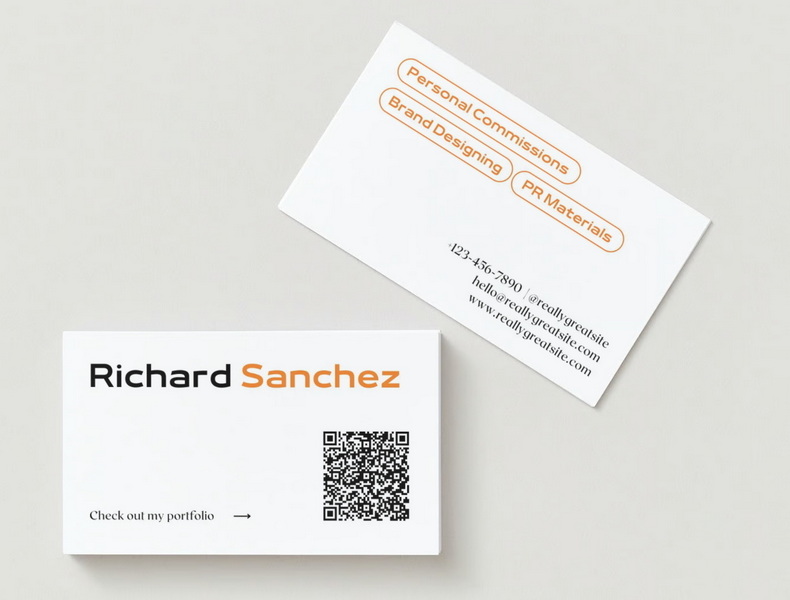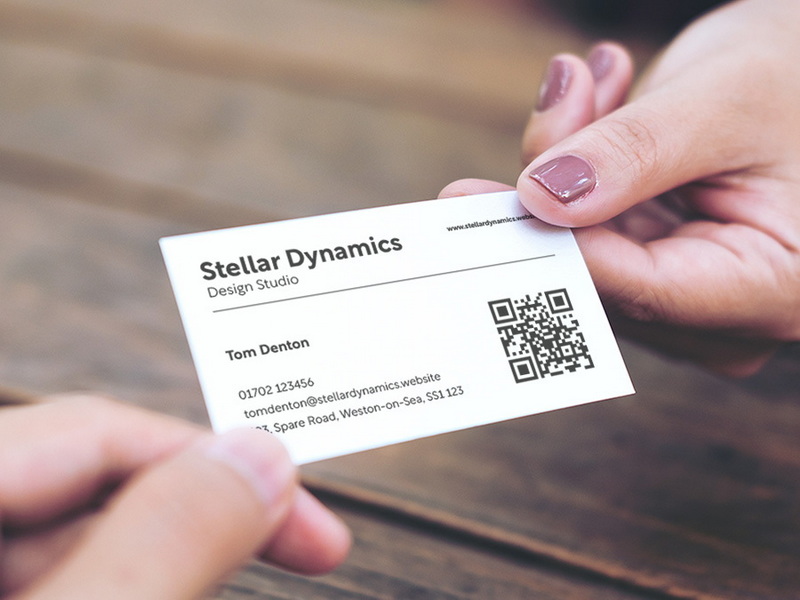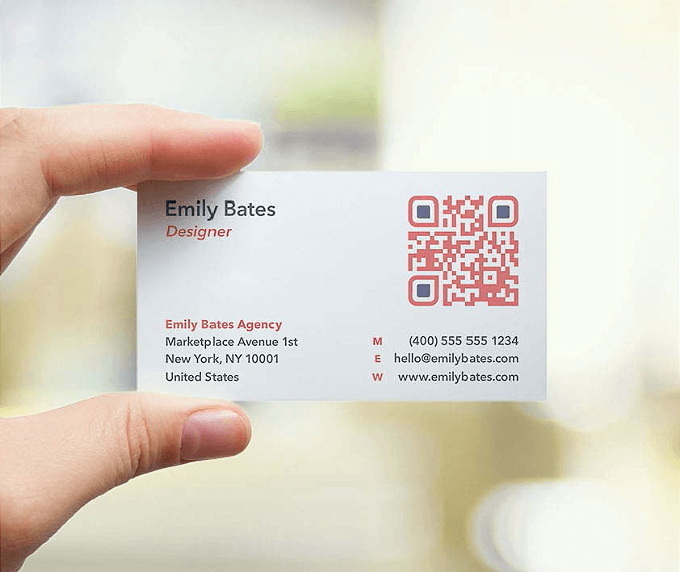Content Menu
● Understanding QR Codes
● Benefits of Using QR Codes on Business Cards
● Steps to Create a QR Code for Your Business Card
>> Step 1: Choose a QR Code Generator
>> Step 2: Select the Type of Information
>> Step 3: Enter Your Information
>> Step 4: Customize Your QR Code
>> Step 5: Generate and Test Your QR Code
>> Step 6: Download and Integrate into Your Business Card Design
● Best Practices for Using QR Codes on Business Cards
● Advanced Features of QR Codes
>> Dynamic vs. Static QR Codes
>> Analytics Tracking
>> Integration with Other Marketing Tools
● Conclusion
● Frequently Asked Questions
>> 1. What type of information can I include in my QR code?
>> 2. Do I need special software to create a QR code?
>> 3. Can I change the information linked to my QR code after printing?
>> 4. How do I ensure my QR code works correctly?
>> 5. Is there any risk associated with using QR codes?
● Citations:
In today's digital landscape, the integration of technology into traditional business practices has become essential for effective networking. One of the most innovative tools in this regard is the Quick Response (QR) code, which allows users to access information quickly and efficiently. This article will provide a comprehensive guide on creating a QR code for your business card, exploring its benefits, best practices, and advanced features that can enhance your networking experience.

Understanding QR Codes
QR codes are two-dimensional barcodes that can store various types of information, including URLs, contact information, and multimedia content. They can be scanned using smartphones or QR code readers, making them an effective tool for sharing information without the need for physical contact. The appeal of QR codes lies in their ability to bridge the gap between physical and digital interactions.
Benefits of Using QR Codes on Business Cards
Incorporating QR codes into your business cards offers several advantages:
- Convenience: Recipients can access your contact information or website with a simple scan, eliminating the need for manual entry.
- Space-Saving: Instead of cluttering your business card with extensive details, a QR code can link to a digital profile or vCard that contains all necessary information.
- Dynamic Updates: If you change your contact information, you can update the link associated with your QR code without needing to reprint your cards.
- Enhanced Engagement: You can direct potential clients to your portfolio, social media profiles, or promotional offers through the QR code.
- Tracking and Analytics: Many QR code generators provide analytics that allows you to track how often your code is scanned and from where. This data can inform your networking strategy and help you measure the effectiveness of your marketing efforts.
Steps to Create a QR Code for Your Business Card
Creating a QR code is straightforward and can be accomplished in just a few steps:
Step 1: Choose a QR Code Generator
Several online tools allow you to create QR codes for free. Some popular options include:
- QRCodeChimp
- QRStuff
- Adobe Express
- HiHello
These platforms offer various customization options and functionalities, allowing you to select one that best fits your needs.
Step 2: Select the Type of Information
Decide what type of information you want to encode in your QR code. Common options include:
- vCard: This allows users to save your contact information directly to their phone contacts.
- URL: Link to your website or social media profiles.
- Text: Display any text message or information directly.
- Multimedia: Include links to videos or presentations that showcase your work or services.
Step 3: Enter Your Information
Input the necessary details into the generator. For a vCard, include:
- Name
- Job Title
- Company Name
- Phone Number
- Email Address
- Website URL
- Address (optional)
For URLs, simply paste the link you want the QR code to direct users to.
Step 4: Customize Your QR Code
Many generators allow you to customize the design of your QR code. You can change colors, add logos or images, and select different shapes. Customizing helps make the code visually appealing and aligns it with your branding. Consider these design elements:
- Color Scheme: Use colors that match your brand identity for better recognition.
- Logo Integration: Placing your logo in the center of the QR code can enhance brand visibility.
- Shape Variations: Experiment with different shapes (square, circular) to make your card stand out.
Step 5: Generate and Test Your QR Code
After entering all necessary information and customizing your design, click on the "Generate" button. Once created, test the QR code using different devices (both iOS and Android) to ensure it scans correctly and leads to the intended destination.
It's crucial to test it before printing; this step prevents any issues during networking events.
Step 6: Download and Integrate into Your Business Card Design
Download the generated QR code in a suitable format (e.g., PNG or SVG). You can then integrate it into your business card design using graphic design software like Adobe InDesign or Canva. Ensure that it is placed prominently on the card for easy scanning.

Best Practices for Using QR Codes on Business Cards
To maximize effectiveness when using QR codes on business cards, consider these best practices:
- Size Matters: Ensure that your QR code is large enough (at least 1 x 1 inch) so that it can be easily scanned without distortion.
- Visibility: Place the QR code in a prominent location on your business card—typically centered on one side or at the bottom corner.
- Call-to-Action (CTA): Include a brief instruction near the code encouraging recipients to scan it (e.g., "Scan for my contact info!").
- Link It Wisely: Ensure that any URL linked through your QR code directs users to a mobile-friendly page. A landing page optimized for mobile devices enhances user experience significantly.
- Test Before Printing: Always test the final product before printing large quantities of business cards. This ensures that everything works as intended.
Advanced Features of QR Codes
As technology evolves, so do the capabilities of QR codes. Here are some advanced features you might consider incorporating:
Dynamic vs. Static QR Codes
Dynamic QR codes allow you to change the destination URL even after printing. This flexibility means you can update links without reprinting cards. Static codes are fixed and cannot be altered once created but are often simpler and cheaper.
Analytics Tracking
Many modern QR code generators offer analytics features that help you track how often your codes are scanned, where they are scanned from, and what devices are used. This data can provide valuable insights into customer behavior and preferences.
Integration with Other Marketing Tools
Consider integrating your QR codes with email marketing platforms or customer relationship management (CRM) systems. This integration allows you to capture leads directly from scans and follow up with potential clients more effectively.
Conclusion
Creating a QR code for your business card is an innovative way to enhance networking opportunities while providing potential clients with easy access to your information. By following the outlined steps and best practices, you can create an effective digital tool that complements your traditional business card. As technology continues to advance, incorporating these digital elements into physical marketing materials will not only keep you relevant but also give you an edge over competitors in today's fast-paced business environment.

Frequently Asked Questions
1. What type of information can I include in my QR code?
You can include various types of information such as contact details (vCard), URLs linking to websites or social media profiles, plain text messages, or even multimedia content like videos.
2. Do I need special software to create a QR code?
No, there are many free online generators available that allow you to create and customize QR codes without requiring special software.
3. Can I change the information linked to my QR code after printing?
If you use a dynamic QR code generator, you can change the linked content without needing to reprint your cards. However, static codes cannot be modified once created.
4. How do I ensure my QR code works correctly?
Always test your QR code with multiple devices before printing. Make sure it scans correctly and directs users to the intended content.
5. Is there any risk associated with using QR codes?
While generally safe, be cautious about where you direct users with your QR codes. Ensure that links lead to secure sites and avoid linking sensitive personal information.
Citations:
[1] https://www.doorway.io/blog/qr-codes-business-cards/
[2] https://www.uniqode.com/blog/qr-codes-for-businesses/qr-codes-business-cards-good-or-bad
[3] https://mymetalbusinesscard.com/blog/business-cards-with-qr-codes/
[4] https://hovercode.com/blog/qr-code-for-business-card/
[5] https://www.qrcodechimp.com/qr-code-business-card-advantages/
[6] https://www.uniqode.com/blog/virtual-business-card/business-card-qr-code-design
[7] https://www.hihello.com/blog/how-to-create-a-qr-code-for-your-business-card-a-step-by-step-guide
[8] https://www.brandly.com/blog/everything-you-need-to-know-about-business-cards-and-qr-codes/
[9] https://mayecreate.com/blog/how-to-create-a-qr-code-for-your-business-card/
[10] https://blinq.me/blog/qr-code-on-business-card-good-or-bad
[11] https://cardynale.com/en/blog/create-a-business-card-with-a-qr-code
[12] https://www.uniqode.com/blog/digital-business-card-basics/scannable-business-cards
[13] https://www.qrcode-tiger.com/qr-code-best-practices
[14] https://drjarodcarter.com/qr-code-for-cash-based-physical-therapy/
[15] https://www.moo.com/us/business-cards/qr-code
[16] https://www.pinterest.com/mlittle8773/business-cards-with-qr-code/
































